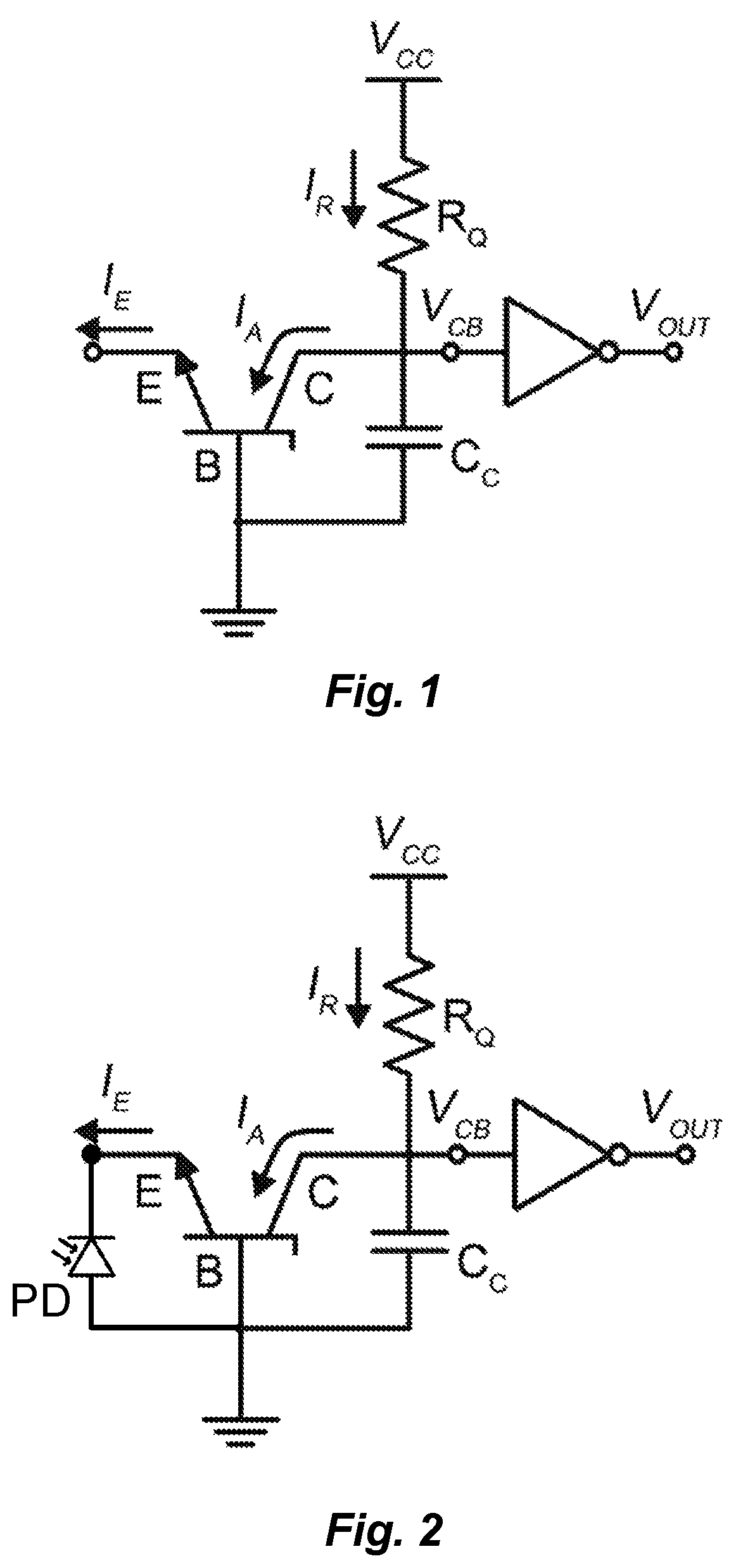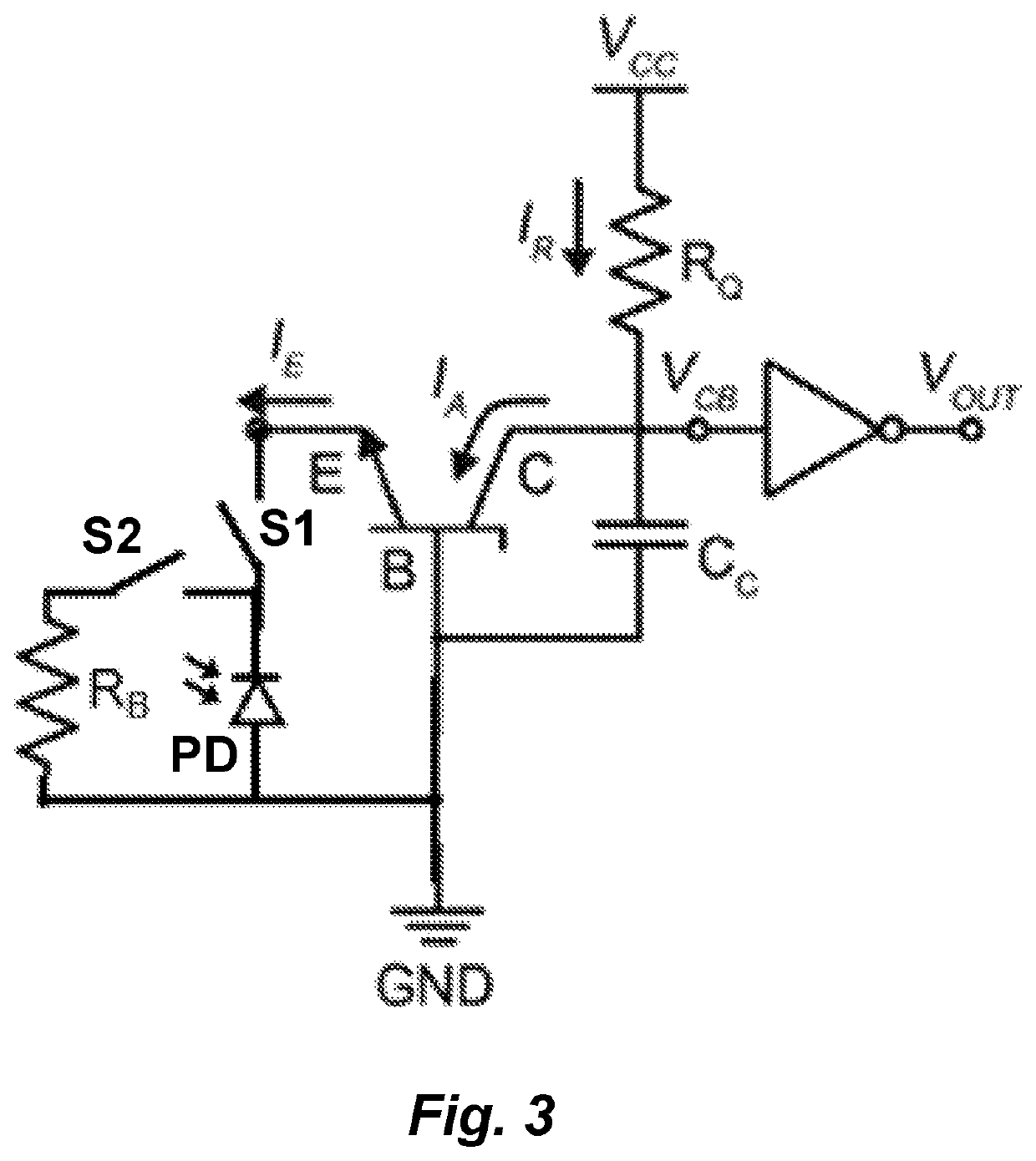Single electron transistor triggered by photovoltaic diode
a photovoltaic diode and electron transistor technology, applied in the direction of optical radiation measurement, instruments, x/gamma/cosmic radiation measurement, etc., can solve the problems of silicon spads with significant wavelength limitations, silicon spads, and inability to detect the longer wavelengths within this rang
- Summary
- Abstract
- Description
- Claims
- Application Information
AI Technical Summary
Problems solved by technology
Method used
Image
Examples
Embodiment Construction
[0013]Various embodiments of the present invention are directed to a single photon detector that includes a germanium photodiode in combination with a single electron bipolar avalanche transistor (SEBAT). The resulting single photon detection circuit has excellent sensitivity, can operate at room temperature, has low dark counts, is silicon / CMOS process compatible, and is sensitive to wavelengths from about 700-1550 nm (wavelengths from 1400-1550 nm are of particular interest in LiDAR applications for eye-safety reasons).
[0014]FIG. 1 shows an example of a single electron bipolar avalanche transistor (SEBAT) circuit as described in M. Lany, G. Boero and R. Popovic, “Electron counting at room temperature in an avalanche bipolar transistor,” Applied Physics Letters, vol. 92, p. 022111, 2008; and E. A. Webster, J. A. Richardson, L. A. Grant and R. K. Henderson, “A single electron bipolar avalanche transistor implemented in 90 nm CMOS,” Solid State Electronics, vol. 76, pp. 116-118, 2012...
PUM
| Property | Measurement | Unit |
|---|---|---|
| wavelengths | aaaaa | aaaaa |
| wavelengths | aaaaa | aaaaa |
| wavelengths | aaaaa | aaaaa |
Abstract
Description
Claims
Application Information
 Login to View More
Login to View More - R&D
- Intellectual Property
- Life Sciences
- Materials
- Tech Scout
- Unparalleled Data Quality
- Higher Quality Content
- 60% Fewer Hallucinations
Browse by: Latest US Patents, China's latest patents, Technical Efficacy Thesaurus, Application Domain, Technology Topic, Popular Technical Reports.
© 2025 PatSnap. All rights reserved.Legal|Privacy policy|Modern Slavery Act Transparency Statement|Sitemap|About US| Contact US: help@patsnap.com


